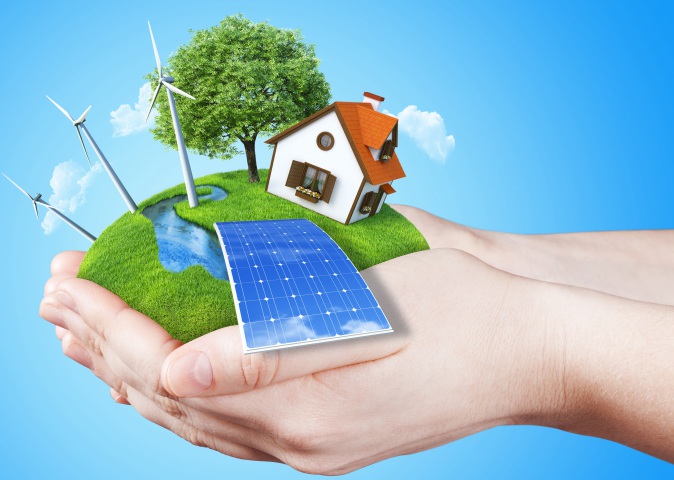
Wanted - new natural energy sources
Making hydro-electric energy less restrictive
No-one has yet come up with a better way of producing electricity than with the good old turbine. Its principle remains the same, regardless of whether the turbine is powered by fossil or nuclear energy, or by natural energy such as wind and ocean currents. Although lacking the notoriety enjoyed by their cousins up in the air because of their lesser visibility, hydro-electric turbines are all over the news. Although they are very effective, they still have the problem of being susceptible to sea salt and barnacle damage. Up until now, the viable solution was coating them in antifouling paints. Although effective, the paints need to be re-applied regularly and are not always particularly environmentally-friendly. With rapid developments in the hydro-electric turbine industry, the chemicals industry is working hard on developing new coatings which could protect the turbines over long periods of time as well as being safe for the environment.

Of course, these projects are still in development and therefore details are closely guarded...although it seems that polyurethane might be one of the key elements.
Projects popping up
 This does not preclude the development of promising projects. Like with wind turbines, a day might come when everyone can have their own hydro-electric turbine, provided they live by a river, at least, according to Idénergie, a young Quebec-based company that has developed a portable and easily connectable hydro-electric turbine. Another even more innovative project is streamwings - a technology for producing energy by harnessing air or water flow to produce electricity. The device comprises of two oscillating wings made from ethylene tetrafluoroethylene (ETFE) which rotate around their central axes and position themselves automatically in the direction of the flow. The first studies carried out on the wings show very promising performance
This does not preclude the development of promising projects. Like with wind turbines, a day might come when everyone can have their own hydro-electric turbine, provided they live by a river, at least, according to Idénergie, a young Quebec-based company that has developed a portable and easily connectable hydro-electric turbine. Another even more innovative project is streamwings - a technology for producing energy by harnessing air or water flow to produce electricity. The device comprises of two oscillating wings made from ethylene tetrafluoroethylene (ETFE) which rotate around their central axes and position themselves automatically in the direction of the flow. The first studies carried out on the wings show very promising performance
Conducting heat
 Ground-coupled heat exchangers have also seen increased interest, particularly as one of the pillars of passive habitats. It is a geothermal process which provides the house with natural ventilation. It works by harnessing the ground's almost constant temperature to heat or cool the air flow before blowing it into the house. As it happens, the ground's temperature varies very little between the seasons, barely fluctuating between 10 and 15°C. In winter: the ground is warmer than the air outside; the air is warmed up and the house can be pre-heated. In summer: the ground is colder than the air outside; the air is cooled and serves as air-conditioning. Carrying these "draughts" requires special tubes which must be built to withstand the pressure of the earth and be completely sealed to prevent external contamination. Once again, plastics come out on top!
Ground-coupled heat exchangers have also seen increased interest, particularly as one of the pillars of passive habitats. It is a geothermal process which provides the house with natural ventilation. It works by harnessing the ground's almost constant temperature to heat or cool the air flow before blowing it into the house. As it happens, the ground's temperature varies very little between the seasons, barely fluctuating between 10 and 15°C. In winter: the ground is warmer than the air outside; the air is warmed up and the house can be pre-heated. In summer: the ground is colder than the air outside; the air is cooled and serves as air-conditioning. Carrying these "draughts" requires special tubes which must be built to withstand the pressure of the earth and be completely sealed to prevent external contamination. Once again, plastics come out on top!
Two types of tubes are used, the first are made of PVC. Their inner layer is extruded to reduce heat exchange. The second type of tube is manufactured from polypropylene and can be enhanced with silver ions with antibacterial properties.
Energy efficient
Polymers are now widely recognized for their great technical properties. As we have seen, they feature prominently in these devices for the production of green energy. But can such a discussion be had without talking about energy efficiency? No, because they also feature heavily in building insulation and in power consumption with the proliferation of LED bulbs ... Not to mention motor manufacturing and more generally in transport where their light weight compared to steel already yields a substantial reduction in vehicle fuel consumption. They are even to be found in lithium batteries: researchers at California's Stanford University have just developed a new polymer which enables batteries to stay charged for longer. It’s the dawn of a new era for these batteries, which are still seen as one of the best hopes of improving electric vehicles.






